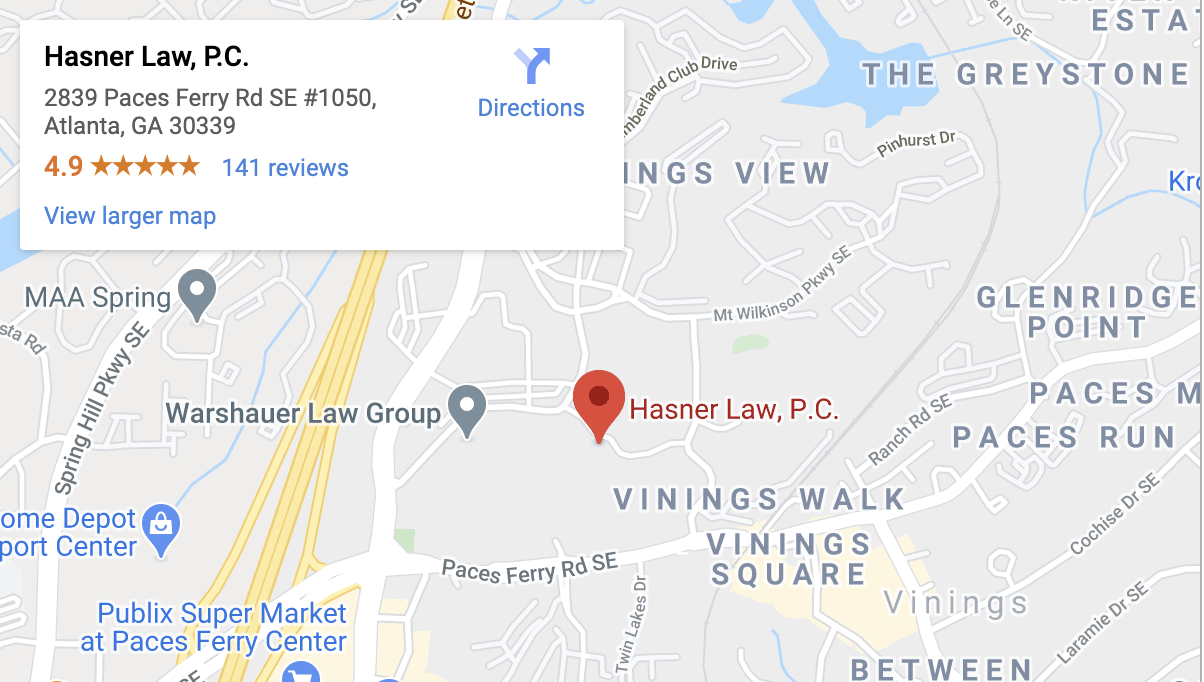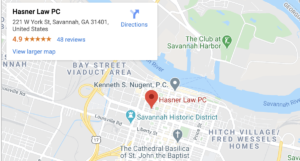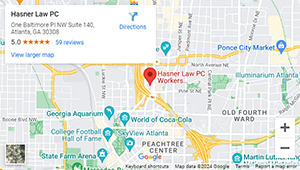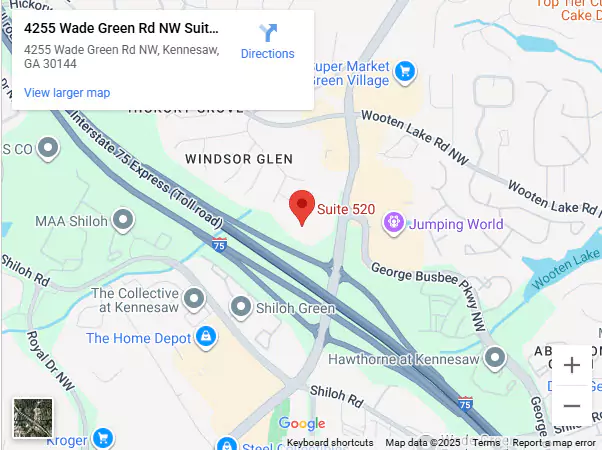Georgia Pedestrian Accidents

Because they are so exposed, pedestrians have a high risk of injury when they are involved in a traffic accident. Georgia is consistently ranked as one of the states with the highest number of pedestrian deaths, putting Georgia’s pedestrians at an elevated risk.
In 2018, the Governors Highway Safety Association released its yearly Spotlight on Highway Safety, and ranked Georgia 16th in the nation for pedestrian fatalities, with more than 90 pedestrian deaths in the first half of 2017 alone and a total yearly count of 260, an increase from the 232 pedestrian deaths in 2016. The number of fatalities continues to rise; an estimated 110 pedestrian fatalities occurred in Georgia in first half of 2018.
These alarming statistics reveal the growing risk for pedestrians in the Atlanta area. Combined totals in Fulton and DeKalb counties from 2011 to 2015 include more than 5,500 pedestrian crashes, with more than 5,000 injuries. If you factor in the additional counties that make up the Greater Atlanta area, the numbers are even more unfortunate.
Although a pedestrian’s behavior might theoretically contribute to an accident, the vast majority of pedestrian accidents result from the carelessness of drivers. If you have been injured or have lost a loved one in a pedestrian accident, call the skilled attorneys at Hasner Law Injury & Workers’ Compensation Attorneys in Atlanta at 678-888-4878 for a free consultation to discuss the details of your case.
When Are Pedestrian Accidents Most Likely to Occur?
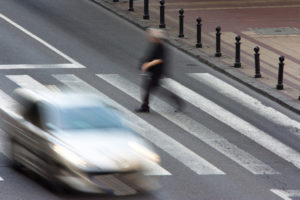
Although a wide variety of scenarios might lead to a pedestrian accident and resulting injury or fatality, motorists usually bear most of the fault. Georgia’s Department of Transportation (GDOT) reports that the main causes of pedestrian accidents are distracted drivers and those who fail to stop.
Georgia law requires that drivers exercise due care to avoid hitting pedestrians. This includes using their horn and taking extra precautions around children or those who appear confused, incapacitated, or drunk. Here are some common situations where negligent drivers might cause a pedestrian accident:
- Driving under the influence of controlled substances including drugs, alcohol, and prescription medication
- Reckless driving or driving too fast for weather conditions when roads are wet or icy
- Failure of a driver to yield the right of way to a pedestrian, at a crosswalk or otherwise
- Driving while fatigued or falling asleep at the wheel
- Driving while distracted, including distractions such as radios, eating, cell phone usage, and texting
Although these occurrences are rare, there are situations when a third party might be responsible for a car colliding with a pedestrian. Some examples include:
- Malfunctioning traffic signals
- Defective cars or car parts that cause a driver to lose control of a vehicle
- Another driver causes an accident in a multi-vehicle crash
Injuries a Pedestrian Might Sustain in an Accident
Whether they are walking, jogging, or running, pedestrians lack bodily protection, so injuries are more severe and more likely to be fatal when a motorist hits them. Some common types of pedestrian accident injuries include:
- Fractures and broken bones
- Head injuries that sometimes result in mild to severe traumatic brain injuries
- Cuts, scrapes, and bruising, which sometimes leave scars
- Road rash
- Internal bleeding with possible organ damage from broken ribs or puncture wounds
- Amputations
- Dislocations
- Neck, back and spinal cord injuries that sometimes result in paralysis
- Comas and PVS (permanent vegetative state)
Trends in Pedestrian Accidents in Georgia
GDOT reports several trends about pedestrian accidents in Georgia based on the most recent data. Pedestrians must constantly be aware of their surroundings and understand the risks that motorists pose to them. Understanding these trends will help you remain safe while walking on Georgia’s roads:
- Men accounted for 70 percent of pedestrian deaths in Georgia from 2011-2015.
- More than 70 percent of victims were between age 20 and 59.
- Pedestrian accidents are at their highest in October, November, and December.
- The majority of pedestrian injuries and fatalities happen on Thursdays, Fridays, and Saturdays.
- The majority of pedestrian injuries and fatalities happen between 6:00 p.m. and midnight.
- The majority of pedestrian crashes happen in daylight hours, but the majority of crashes that result in death occur when it is dark and not lit well.
- Almost 80 percent of all pedestrian accidents occur when the weather is clear.
- Almost 70 percent of pedestrian accidents occur on city streets, with more than 81 percent in urban areas.
- Almost 80 percent of pedestrian deaths don’t occur at an intersection.
- More than 50 percent of pedestrian fatalities occur when crossing a roadway
Georgia Pedestrian Safety Action Plan

Government officials in Georgia have shown concern over increasing pedestrian injuries and fatalities over recent years, spawning the GDOT’s Pedestrian Safety Action Plan 2018-2022. GDOT intends for the action plan to do the following things to increase pedestrian safety in Georgia:
- Increase understanding of pedestrian crash patterns across Georgia
- Promote data-driven action to increase safety
- Promote investments in solutions that make pedestrians safer
- Connect funding sources with action for targeted locations
Even with the State of Georgia’s dedication to reducing pedestrian injuries and fatalities, much work must be done and pedestrians remain at risk. If you, your child, or another loved one were injured in a pedestrian accident, you might be eligible to recover damages in a personal injury or wrongful death suit against the driver who caused the injuries.
Seeking Compensation for Pedestrian Accidents in Atlanta
When seeking compensation for injuries sustained in, or a death caused by, a pedestrian accident, victims most often seek to recover so-called compensatory damages. Compensatory damages aim to pay a victim for the economic and non-economic losses the victim sustained in the accident. Here are some of the most common examples of damages that a victim might be able to recover:
- Medical costs including ambulance and emergency services, surgery, radiology, doctor visits, medications
- Rehabilitative services such as physical therapy and assistive devices like wheelchairs and prosthetic limbs
- Future medical expenses in the event of a long-term disability
- Lost wages for time away from work due to injury
- Lost earning capacity when a permanent condition or disability prevents a victim from returning to work
- Non-economic losses such as pain and suffering, loss of consortium, and scarring and disfigurement
In rare cases, pedestrian accident victims may also recover punitive damages, which aim to punish the defendant’s actions and ensure they do not happen again. Under Georgia law, for punitive damages to be available the defendant’s actions must have been willful, fraudulent, wanton, or with malice. Georgia courts also award punitive damages when drugs or alcohol led to an accident and injuries.
Modified Comparative Negligence in Pedestrian Accident Cases in Georgia

Georgia courts apply a so-called modified comparative negligence rule to personal injury cases, including those that involve a pedestrian accident. Under this rule, a court must assign a percentage of fault for the accident to every party in a lawsuit. In some cases, fault lies with a single person, such as a distracted driver who struck a pedestrian in a crosswalk.
In other cases, multiple parties might share fault. If the court finds that the plaintiff’s own actions contributed to the accident, the court will assign a percentage of fault to the plaintiff and will reduce the damages the plaintiff can recover by the percentage of the plaintiff’s fault. For example, if a court finds a driver 70 percent at fault for being distracted, but that the victim bore 30 percent of the fault because the victim wasn’t paying attention, the court will reduce the victim’s available damages by 30 percent. If in that case the victim had suffered $1,000,000 in damages, the maximum compensation the victim could recover would drop to $700,000.
Georgia’s law of modified comparative negligence also imposes a 50 percent threshold; if the court finds the plaintiff 50 percent or more at fault for the accident, the plaintiff cannot recover compensation at all from the other parties. This rule motivates the defense to shift as much blame as possible to the victim. A seasoned pedestrian accident lawyer can help victims of pedestrian accidents resist these defense efforts to victim blame.
Contact Hasner Law Injury & Workers’ Compensation Attorneys Today to Speak With an Experienced Pedestrian Accident Attorney
A pedestrian accident can devastate the lives of its victims. Serious injuries lead to time away from jobs and increased physical, emotional, and financial stress. The skilled team of professionals at Hasner Law Injury & Workers’ Compensation Attorneys aims to help victims of pedestrian accidents put their lives back together by pursuing the maximum compensation available for their injuries and losses.
If you have sustained an injury in a pedestrian accident in the Greater Atlanta area, or you have lost a loved one to the carelessness of a driver, contact the Hasner Law Injury & Workers’ Compensation Attorneys firm at 678-888-4878 or online to schedule a free consultation with an experienced pedestrian accident attorney. Don’t wait. The sooner you contact a member of our team, the better our opportunity to help you evaluate whether you are entitled to significant compensation. In many cases, we represent clients on a contingent fee basis in which our clients pay no money up front and we collect fees only out of the funds we are able to recover for our clients.




